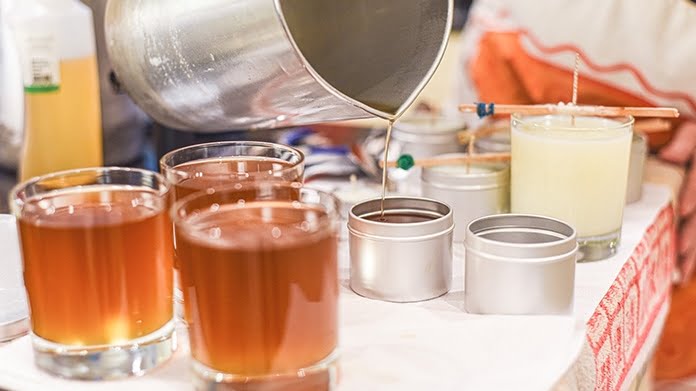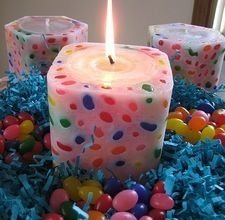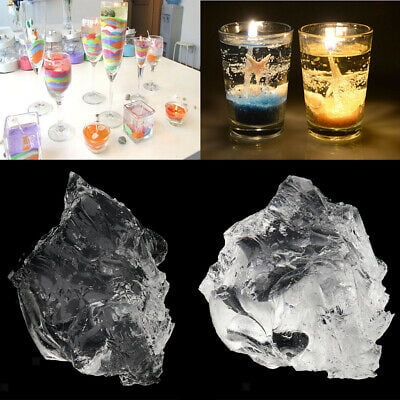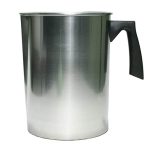Introduction
Vegan wax for candle making has become increasingly popular due to its numerous benefits. It is a completely natural and cruelty-free alternative to traditional paraffin wax, making it an ideal choice for individuals looking to create vegan candles. Vegan waxes are often soy-based and produce clean burning, non-toxic flames that do not emit harmful or unpleasant odors like paraffin wax. Additionally, they contain fewer hydrocarbons and are therefore considered more eco-friendly options.
The production of vegan wax requires fewer emissions and less hazardous materials than the production of other types of wax. As a result, it produces fewer pollutants than petroleum derivatives or synthetic formulas used in manufacturing typical candles. This makes them a preferred choice among those interested in reducing their carbon footprint while still creating beautiful and long lasting candles without the use of animal byproducts. Furthermore, vegan waxes are available in a variety of colors and scents, so you can choose the perfect match for your desired effect when crafting your own candles at home. They also tend to be more affordable than alternative kinds of candle wax because organic ingredients are used in their production rather than expensive chemical compounds.
There is much to consider when deciding which type of candle wax works best for your needs; however, vegan wax has many unique benefits that make it attractive to both eco-conscious consumers looking to reduce waste as well as vegans seeking out cruelty-free methods for creating gorgeous candles for any occasion.
Types of Vegan Wax Available and Their Benefits
The most common type of vegan wax available for candle making is soy wax. Soy wax is derived from the oils of soybeans and provides an eco-friendly alternative to paraffin and beeswax. Soy candles typically burn cooler, last longer, and emit fewer toxic particles when burned compared to traditional paraffin or beeswax candles. The wax also holds a good scent throw and is easy to work with while being budget friendly.
Another type of vegan wax used in candle making is Palm Wax. Palm Wax is acclaimed for its beautiful crystalline finish which gives candles a lacy and crystallized appearance once cooled down. The bonus of this option is that it holds up well even in warmer temperatures without melting down quickly, so it’s great for those who live in hotter climates.
Rapeseed Wax is a newer player on the market and, like other plant-based vegetable waxes, is all natural and biodegradable but has an incredible capacity to hold more fragrance than any other ingrendient used in candle making without releasing unwanted side fumes. It’s slow burning capabilities also give it an advantage over the traditional styles.
Finally, Coconut Wax is one of the more expensive vegan options but makes up for it by holding scent extraordinarily well while producing minimal soot when burned -perfect if you have problems with smoke when burning your candles. It also burns slower than other traditionally used ingredients meaning you get much more out of your purchase!
Tips for Working with Vegan Waxes
When you work with vegan waxes for candle making, it is important to remember that they require some specific considerations. Here are some tips to keep in mind when crafting your candles with vegan wax:
1. Temperature: Make sure that your melting temperature is sufficiently warm enough to ensure proper pouring and melting of the wax. If the temperature is too low, it can cause crystallization and hardening of the wax. You should also avoid overheating, as this will result in a waxy residue on the candle surface.
2. Pouring Techniques: When pouring, experimentations can prove beneficial in finding a suitable speed for your wax type so that it does not create “tear-drops” or uneven surfaces on your candles. It might be ideal to pour slowly, in small increments from different angles and heights on each candle when using vegan waxes.
3. Wicking Selection: For a better melt-pool reach, select larger sized wicks specifically made for vegan candle waxes like soy or rapeseed. This helps promote an even burning of all layers which creates higher quality finished products than with smaller wicks.
4. Cooling Time: Be prepared to set aside more cooling time ” vegan candidates usually take longer than their paraffin counterparts since they have an increased solidification point while cooling down; this varies depending on the blend used by each manufacturer.
5. Safety & Storage: As with any other type of product, keep unused wax out of reach from children and animals at all times during storage and follow safety standards regarding its use according to respective regulations on where you live/work/sell them (avoid placing open flames close to combustible materials).
Where To Find Vegan Wax and Popular Brands
The process of making vegan wax for candle making is quite simple and involves the use of plant-based ingredients instead of animal-based ones. Popular ingredients used in vegan wax include soya, coconut, palm and rapeseed/canola oil, along with other vegetable fats such as tallow or lard. Vegan wax also contains natural colourants, often derived from natural sources like spices or herbs.
Vegan wax can be bought online or in specialty craft stores. Some popular brands that produce vegan candles are Nirvana Soy Botanicals, Pure Integrity Candles, 100% Pure Natural Beeswax Candles and Earthy Candles. When selecting a vegan candle make sure to check the labels of the product – look for certified products that contain only plant based ingredients.
Beyond just candles, vegan wax can be used in a variety of crafting projects. It can be blended with other vegetable-derived oils like jojoba and shea butter to create lotion bars or balms, or mixed into lip balms for a more nourishing hydrating experience. Additionally it is possible to make body butters out of vegan waxes by combining them with various essential oils for healing properties. This allows vegans to craft their own personal care products free from any animal derivatives which ought to come as great news to conscious consumers.
Creative Options For Incorporating Vegan Wax Into Candles
One of the most creative ways to incorporate vegan wax into candles is to create a scented candle. Soy wax, one of the most popular vegan-friendly options for candle-making, can be infused with fragrances such as lavender, rose, sage and other essential oils to create a truly unique aroma. Soy wax also holds scent better than other types of wax due to its low melting point and plasticity which allows it to absorb larger amounts of the oils. You can mix different oils together for a unique blend or use a single oil for a classic fragrance.
Another creative option for making vegan candles is using beeswax alternatives. Beeswax has traditionally been used in the creation of many everyday items like soap, balms and candles but it is not always vegan friendly due to its natural origin. Thankfully there are now Plant Waxes available such as rapeseed/canola and palm oil blends which offer a similar texture, burn time and opacity that are perfect if you want cakes that have a classic look to them while being free from animal products.
You can also create beautiful layered candles with different colors by using different plant waxes ” some such as soy are naturally creamy colored while others like coconut are whitish in color. This way you can create two toned or three toned candles without having to worry about chemicals or animal derived products contaminating the final product.
Common Fragrances That Blend Well With Vegan Wax
Vegan wax is becoming a more popular choice for candle makers who wish to create vegan friendly candles without relying on animal-based waxes such as beeswax. Vegan wax does not contain any animal-byproducts, making it an ethical and sustainable alternative for candle makers. While the types of vegan wax range from soy, rice bran, palm and other plant-based substitutes, they all have a creamy texture that results in excellent candle burning qualities and is ideal for holding essential oils or fragrance oils.
While there are many types of fragrances that blend well with vegan wax for candle making, some of the most commonly used include natural scents like lavender, cedar wood, jasmine, sandalwood and orange blossom. Sweet scents like patchouli, vanilla and cinnamon also work nicely with vegan candles. Fruity scents like pear, watermelon, peach and mango are also popular choices when blending with vegan wax candles. Finally earthy tones like vetiver and eucalyptus bring a pleasant but subtle scent to vegan candles that lasts a long time.
Potential Challenges of Working With Vegan Wax
One of the biggest challenges when working with vegan wax for candle making lies in finding a reliable supplier. Since vegan wax may not be as widely available as traditional wax, finding a manufacturer that sources only sustainable materials can be difficult. Additionally, many manufacturers of vegan waxes don’t provide detailed information about their products’ ingredients or durability. As a result, it can be hard to determine which type of vegan wax will best meet your needs and preferences before purchasing.
Another challenge when working with vegan wax is its tendency to be more fragile than other types of waxes. This fragility can affect the appearance and quality of the end product since vegan candles are prone to drooping or sinking during the cooling process. Furthermore, because it’s often softer than other types of wax, it has a lower melting point and thus requires special techniques during pouring that must be adhered to. When not poured properly, vegan candles could easily get distorted in appearance or potentially crack during the cooling period. Lastly, some scents used in traditional candle-making may not blend as well with vegan wax due to its different molecular structure, so users may need to experiment before getting their desired results.
Expert Advice
One key tip when working with vegan wax for candle making is to ensure proper temperature control. Vegan wax can burn at high temperatures and requires very specific temperatures in order to get the maximum performance out of the wax. Setting a thermometer next to your wax melting container will help you keep track of the temperature. Additionally, there are many vegan waxes that are specifically designed for candle making so be sure to check the label or instructions on whichever product you choose as they might require different heating conditions depending on their composition.
Another useful tip is to pre-heat your containers before pouring melted vegan wax. By preheating the containers, it will act as an insulator and will keep the heat consistent for a better and more reliable result. This is particularly important when using metal tins or jars as these will absorb heat from your hot wax quickly, slowing down the setting time which can affect how your candles look in the end.
It’s always a good idea to practice layering colors when making colored candles as this helps achieve more vibrant colors without having to use too much dye or pigment. Dyes extracted from natural sources often do not bind well with hard vegetable-based adipose waxes and tend to separate over time if not properly blended into the mixture. For best results try combining shades of similar tones together such as yellow and orange or red and pink instead of contrasting colors like blue and yellow or green and pink as this will give softer pastel colors but still allow you to layer them successfully. Lastly, remember that no two batches of vegan wax are ever exactly alike, even if they’re made from identical ingredients; you may want to consider testing each new batch before applying it onto any projects just in case so you can troubleshoot potential issues early on instead of wasting supplies through trial and error.
Summary
Vegan wax is a type of wax made with no animal by-products, making it suitable for vegan candle making. There are many benefits to using vegan wax for candle making, including improved scent throw and longer burn times, as well as being a more sustainable way to produce candles.
The challenges that come with working with vegan wax include difficulty in obtaining the material, since it is not as widely available as traditional paraffin waxes. Also, many vegan waxes have lower melting points which can cause them to be difficult to work with when trying to create a structure. Finally, as compared to paraffin wax, many of the vegan options are more expensive so a larger budget may be necessary when producing candles using vegan materials.
Overall though, using vegan wax for candle making has several advantages ” from being better for the environment and animals to providing higher performance candles due to better scent throw and longer burn times. If properly used and cared for during the production process, vegan wax can create beautiful, eco-friendly and cruelty-free candles!

Welcome to my candle making blog! In this blog, I will be sharing my tips and tricks for making candles. I will also be sharing some of my favorite recipes.





